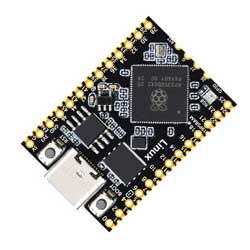- sales/support
Google Chat: zj734465502@gmail.com
- sales
+86-0755-88291180
- sales01
sales@spotpear.com
- sales02
dragon_manager@163.com
- support
tech-support@spotpear.com
- CEO-Complaints
zhoujie@spotpear.com
- sales/support
WhatsApp:13246739196
RP2350B-MINI-A picotool Tutorial
【Picotool installation tutorial】
】Install necessary dependencies
You need to install the development environment and ARM cross-compilation tool chain required for compilation first.
sudo apt update
sudo apt install build-essential cmake gcc-arm-none-eabi libnewlib-arm-none-eabi libstdc++-arm-none-eabi-newlib pkg-config libusb-1.0-0-dev
【Get the source code】
Create a working directory (e.g. pico) and clone the official repositories of pico-sdk and picotool.
mkdir -p ~/pico
cd ~/pico
git clone https://github.com/raspberrypi/pico-sdk.git
git clone https://github.com/raspberrypi/picotool.git
After cloning is complete, you need to initialize and update the submodules within pico-sdk.
cd ~/pico/pico-sdk
git submodule update --init
【Setting environment variables】
You need to tell the build system the location of pico-sdk.
】Temporarily set environment variables:
export PICO_SDK_PATH=~/pico/pico-sdk
】Setting environment variables permanently:
sudo nano ~/.bashrc
Add to
export PICO_SDK_PATH=~/pico/pico-sdk
Then execute
source ~/.bashrc
【Compile and install picotool】
cd ~/pico/picotool
mkdir build
cd build
cmake ..
make -j&nproc # Compile using multiple cores to speed up
sudo make install # Install picotool to the system path (such as /usr/local/bin)
【Verify Installation】
picotool help
If successful, a list of all available commands and options is displayed, indicating that the installation was successful.
【Read device information】
Make sure the Pico is in BOOTSEL mode (shows up as an RPI-RP2 disk when connected to the computer). Then do
picotool info




